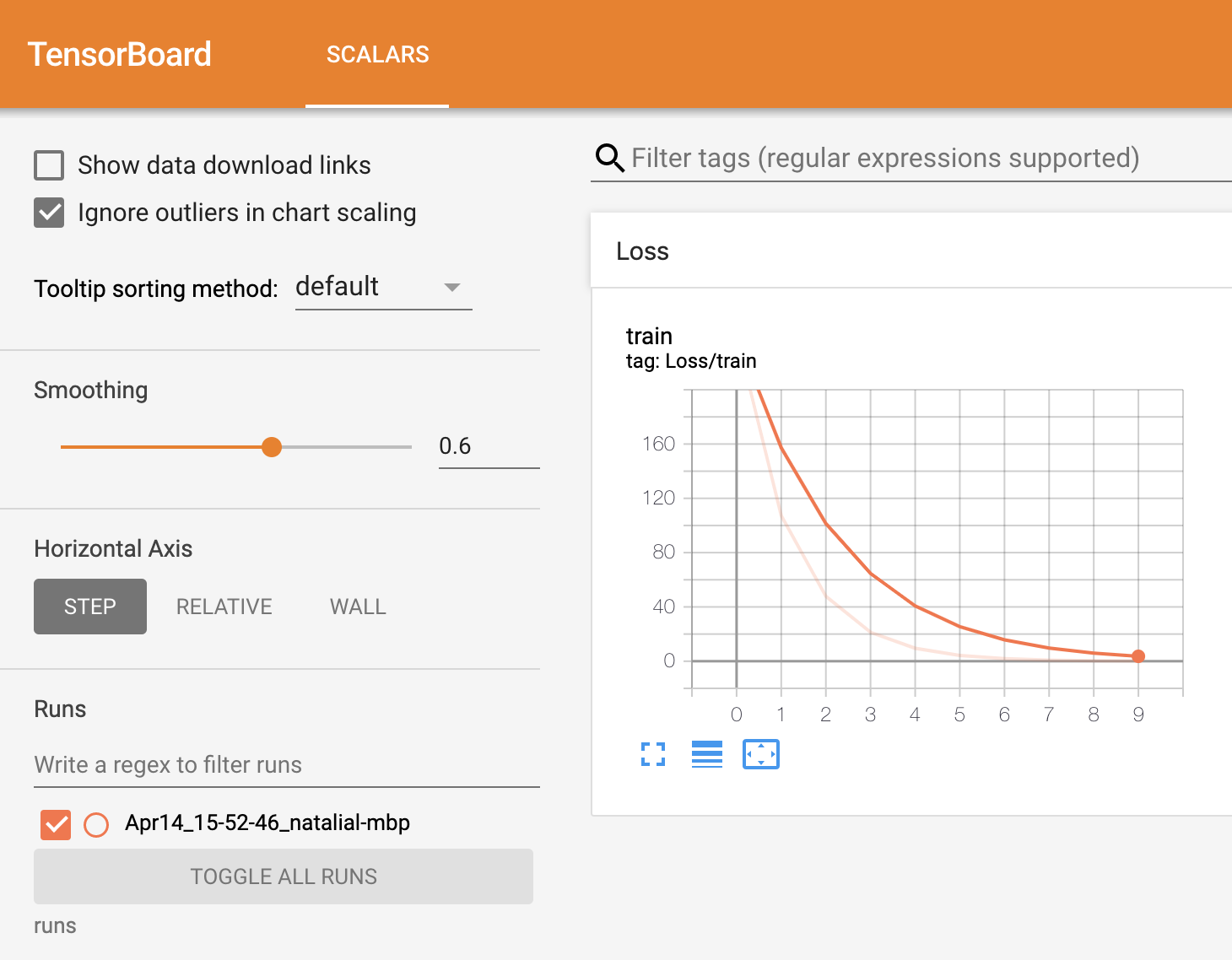Note
Click here to download the full example code
How to use TensorBoard with PyTorch¶
TensorBoard is a visualization toolkit for machine learning experimentation. TensorBoard allows tracking and visualizing metrics such as loss and accuracy, visualizing the model graph, viewing histograms, displaying images and much more. In this tutorial we are going to cover TensorBoard installation, basic usage with PyTorch, and how to visualize data you logged in TensorBoard UI.
Installation¶
PyTorch should be installed to log models and metrics into TensorBoard log directory. The following command will install PyTorch 1.4+ via Anaconda (recommended):
$ conda install pytorch torchvision -c pytorch
or pip
$ pip install torch torchvision
Using TensorBoard in PyTorch¶
Let’s now try using TensorBoard with PyTorch! Before logging anything,
we need to create a SummaryWriter instance.
import torch
from torch.utils.tensorboard import SummaryWriter
writer = SummaryWriter()
Writer will output to ./runs/ directory by default.
Log scalars¶
In machine learning, it’s important to understand key metrics such as loss and how they change during training. Scalar helps to save the loss value of each training step, or the accuracy after each epoch.
To log a scalar value, use
add_scalar(tag, scalar_value, global_step=None, walltime=None).
For example, lets create a simple linear regression training, and
log loss value using add_scalar
x = torch.arange(-5, 5, 0.1).view(-1, 1)
y = -5 * x + 0.1 * torch.randn(x.size())
model = torch.nn.Linear(1, 1)
criterion = torch.nn.MSELoss()
optimizer = torch.optim.SGD(model.parameters(), lr = 0.1)
def train_model(iter):
for epoch in range(iter):
y1 = model(x)
loss = criterion(y1, y)
writer.add_scalar("Loss/train", loss, epoch)
optimizer.zero_grad()
loss.backward()
optimizer.step()
train_model(10)
writer.flush()
Call flush() method to make sure that all pending events
have been written to disk.
See torch.utils.tensorboard tutorials to find more TensorBoard visualization types you can log.
If you do not need the summary writer anymore, call close() method.
writer.close()
Run TensorBoard¶
Install TensorBoard through the command line to visualize data you logged
pip install tensorboard
Now, start TensorBoard, specifying the root log directory you used above.
Argument logdir points to directory where TensorBoard will look to find
event files that it can display. TensorBoard will recursively walk
the directory structure rooted at logdir, looking for .*tfevents.* files.
tensorboard --logdir=runs
Go to the URL it provides OR to http://localhost:6006/

This dashboard shows how the loss and accuracy change with every epoch. You can use it to also track training speed, learning rate, and other scalar values. It’s helpful to compare these metrics across different training runs to improve your model.
Learn More¶
Total running time of the script: ( 0 minutes 0.000 seconds)



